UTC manages
CHALLENGING LOGISTICS FOR BIOFUEL REFINERY PLANT
In the fast-paced and often unpredictable world of specialized transportation, astute logistics professionals always expect the unexpected.
External conditions such as changing weather, uprisings, strikes, and delays are factored into their everyday planning. UTC’s recent Heartwell project was fraught with many of these challenges. Knowledge and experience guided UTC’s team of professionals through the risks and turbulence while delivering equipment for a biofuel refinery plant in Hastings, Nebraska.
UTC was tasked with transporting 50,000 freight tons of cargo, including large modular components of up to 21 feet in height and 100 tons in weight, which were vital to the refinery’s construction. The cargoes originated in Europe, Asia, and North America and were shipped using multimodal transport methods such as ocean freight, air freight, barging, trucking, and heavy haul services. Once completed, this greenfield project will produce diesel fuel from animal fats and used cooking oil, offering improved environmental performance and reduced carbon emissions.
Accessing a landlocked site
Nebraska is landlocked, and getting to the job site with no immediate river access was challenging. The modularized pieces were too big to use traditional rail and trucking options, so UTC experts had to identify a roll-off location close to the job site where deck barges could dock. After several surveys and one year of prep work, they identified the closest discharge city as Brownville, Nebraska, which has a good boat ramp to accommodate a roll-off operation.
UTC experts developed a thorough method plan to send the cargo via barge up the Mississippi River to the Missouri River to get to Brownville. The equipment would then have to travel some 180 miles from Brownville to Hastings via road, requiring not only DOT permits, but also extensive utility work to avoid overhead obstructions.
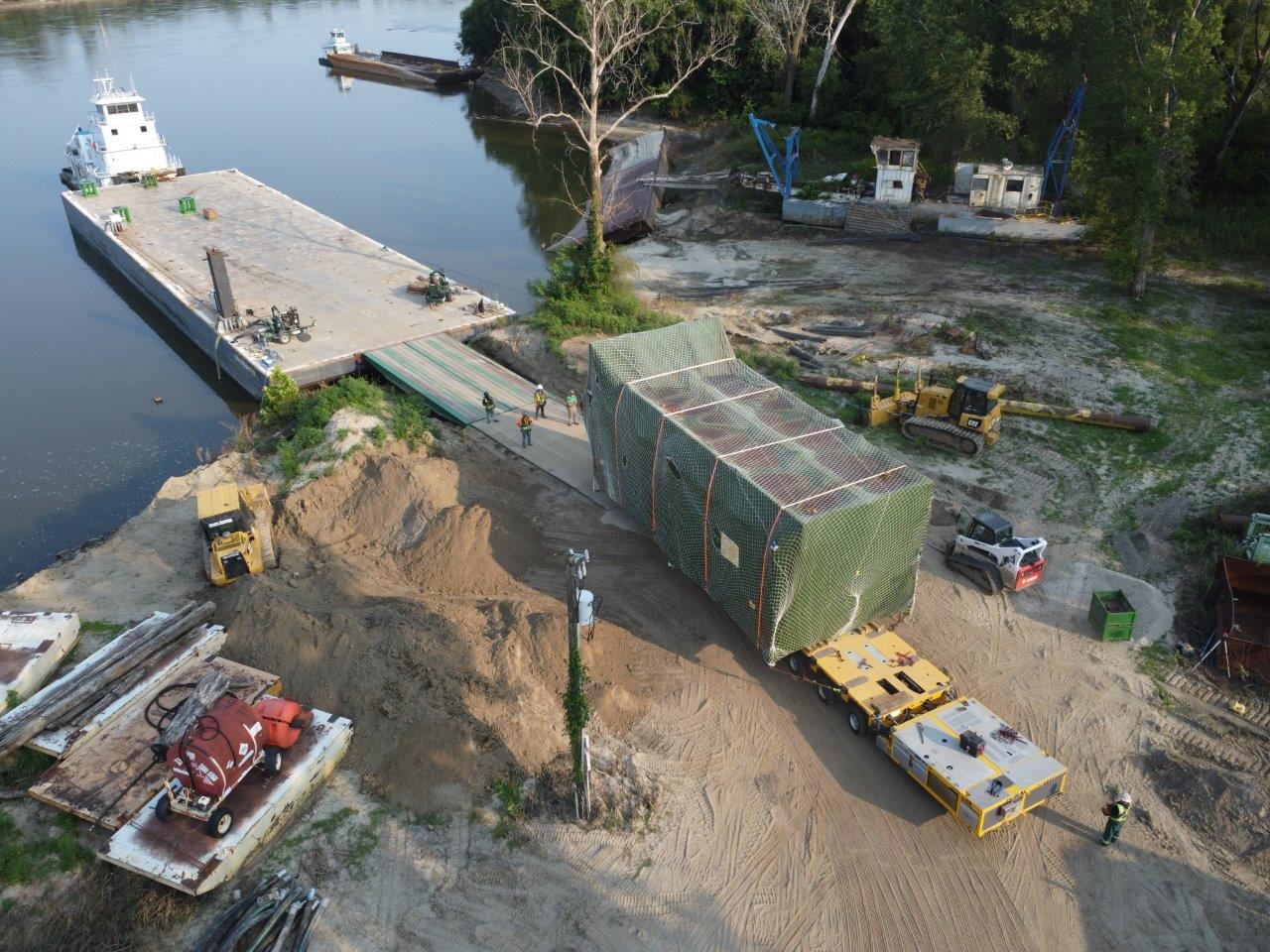
Seamless Multimodal Transport
The first reactors originating in Spain were delivered to Houston and trucked on specialized dolly systems to Hastings during the fourth quarter of 2023. In 2024, large module components originating in Shanghai were transported via heavy lift vessels to New Orleans with the help of UTC's China offices.
After this modular equipment was cleared through customs, shipments departed from the New Orleans entry port in February and April of 2024, traversing the Mississippi and Missouri Rivers on a 180' x 54' spud barge and a 250' x 54' deck barge.
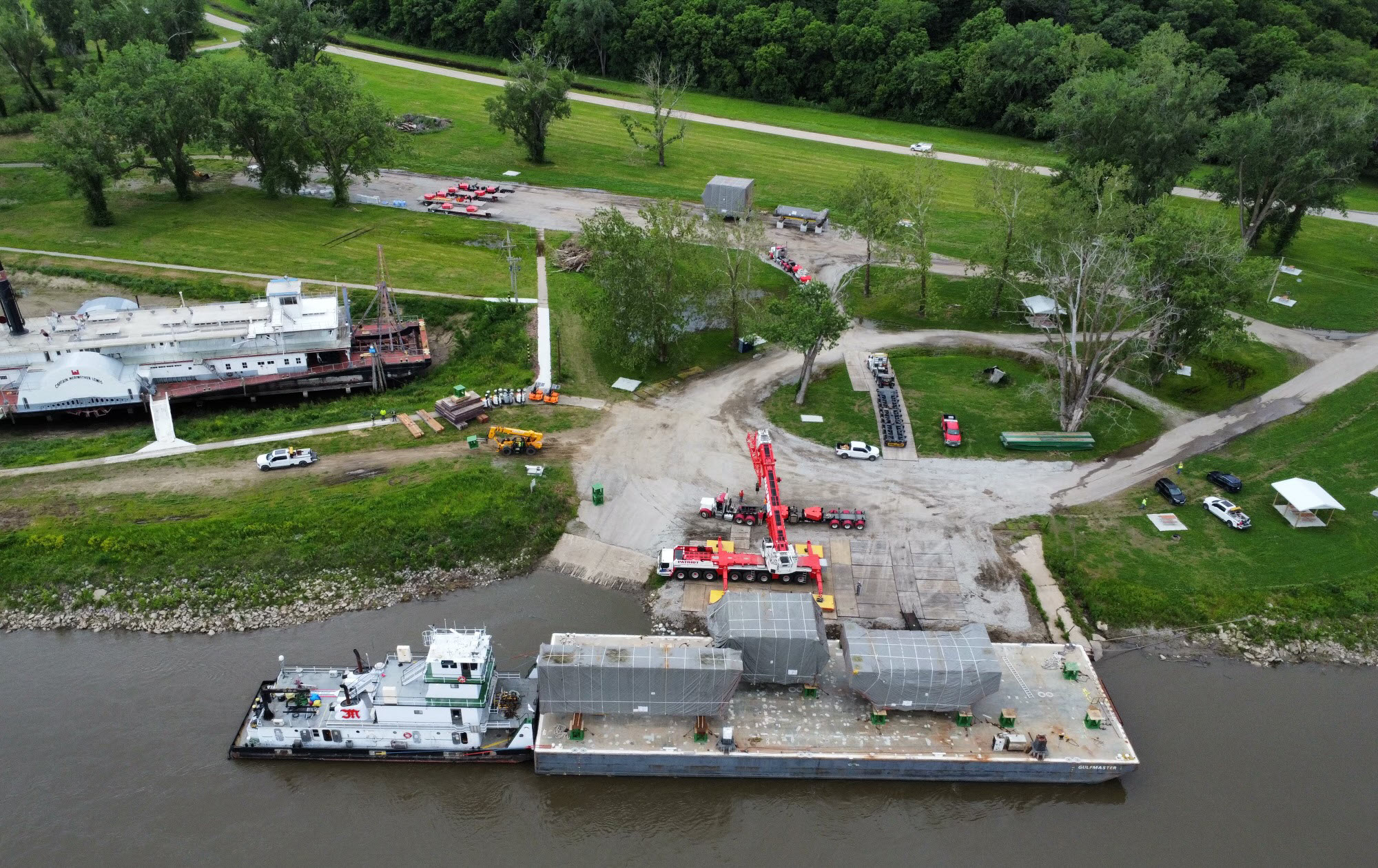
Fast-flowing Waters Necessitate a Change in Plans
The Missouri River is free-flowing and joined by numerous tributaries. With its many sand bars, the river is challenging to traverse, poses a risk to boats, and requires a local tug captain to navigate.
The initial plan was to place the first deck barge perpendicular to the shoreline in Brownville for a roll-off operation. however, the Missouri River levels and currents were unusually strong and high, measuring approximately 3.5 knots, and even with two assist tug-boats and the mooring system tied up to bulldozers and tractors on land, it was deemed too risky to unload in that fashion, so an alternate plan was implemented.
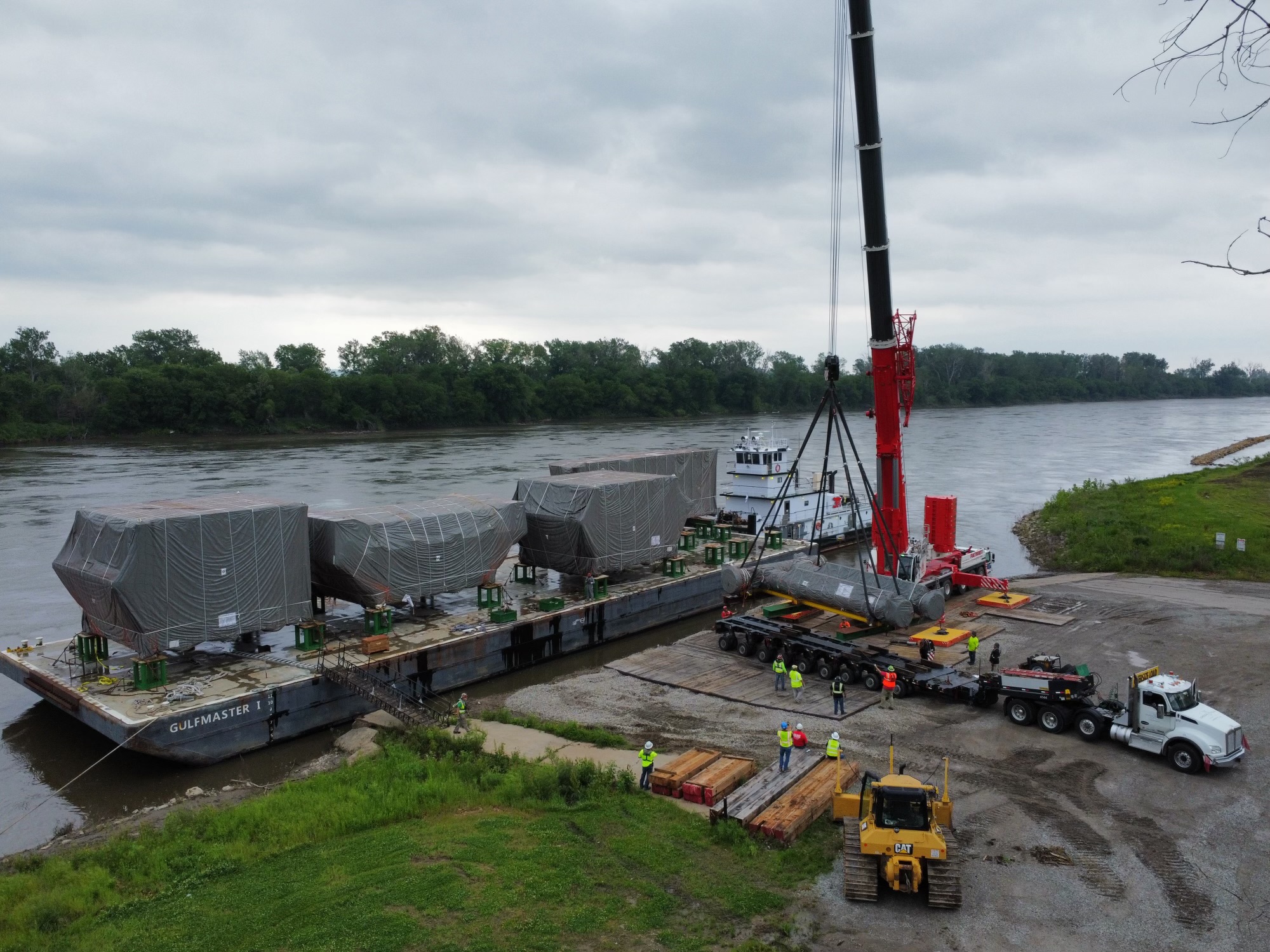
Instead of rolling off using a SPMT, they decided to use a hydraulic crane. At the offloading site, a compaction test of the prepped area was conducted with the assembled crane boom slewing 360 degrees in timed intervals. No movement or shifting was observed under all four crane outriggers with load spreaders. With all precautions taken, it was safe to proceed.
The city of Brownville allowed UTC to use a solid laydown yard with an asphalt base near the landing area. Some of the modules were unloaded using the crane and moved to the temporary laydown yard.
Extreme Weather Conditions
It is well-known that the Missouri River is prone to flooding. Due to this, UTC’s team was diligent in routinely checking weather and water levels, especially during the ongoing operations.
The first two pieces were unloaded and moved to the staging site. Winds picked up and exceeded 20 mph, the maximum safety level for crane discharge. At the same time, they noticed the river gauge showed an 11-foot rise over the next few days. The crew consulted the Army Corps of Engineers website, which gauges water level fluctuations on the river, and discovered that flood gates in the North at Gavins Point Dam had been opened due to torrential rains feeding into the tributaries. Projections were certain that the landing area would be underwater by nightfall.
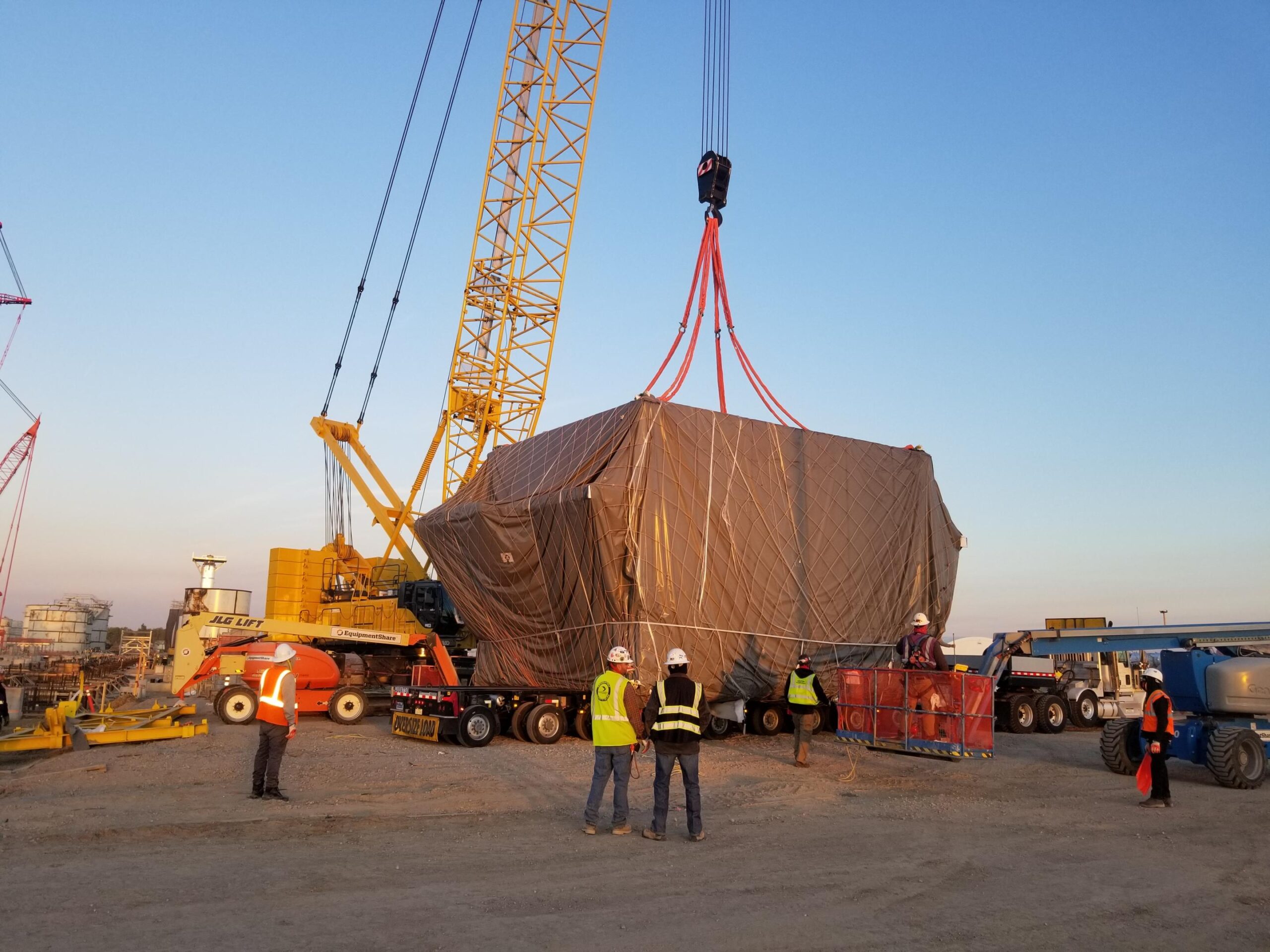
Quick Thinking to Overcome Rising Waters
Matt Loll, UTC Executive VP of Global Project Development, recounts the harrowing conditions. “As hours passed, waters rose, and the crane was de-mobed and moved to protect equipment and labor. The entire staging area had to be vacated. A few hundred yards downriver, near a riverboat hotel utilized as an accommodation point, we discovered a calm cove protected from strong currents. The property owner was agreeable and very helpful in assisting with excavating the land area so the barge could dock at an even level. We built a ramp to allow the remaining three modules of equipment to roll off.
Additional challenges arose, and a build-up was necessary to allow the pieces to move from the new barge landing area to the new laydown site. The area was wooded, with no clear path for the equipment. Civil works and matting were necessary throughout to remove soil, rocks, and other debris and build a temporary bridge bypass allowing movement over the mooring system anchoring the riverboat hotel and matting a path to the laydown area. Mooring cables had to be protected and were channeled through cement blocks for stability. The remaining three modules rolled off and were parked in the hotel parking lot.”
The second lot, with 2 deck barges loaded with 12 modules in total, arrived in July of 2024. After unloading by the same roll-off method at the new landing-cove, they were again hit with near-record-breaking flooding of the Missouri River. UTC’s team prepared and elevated all modules on stands and beams to protect them from rising waters.
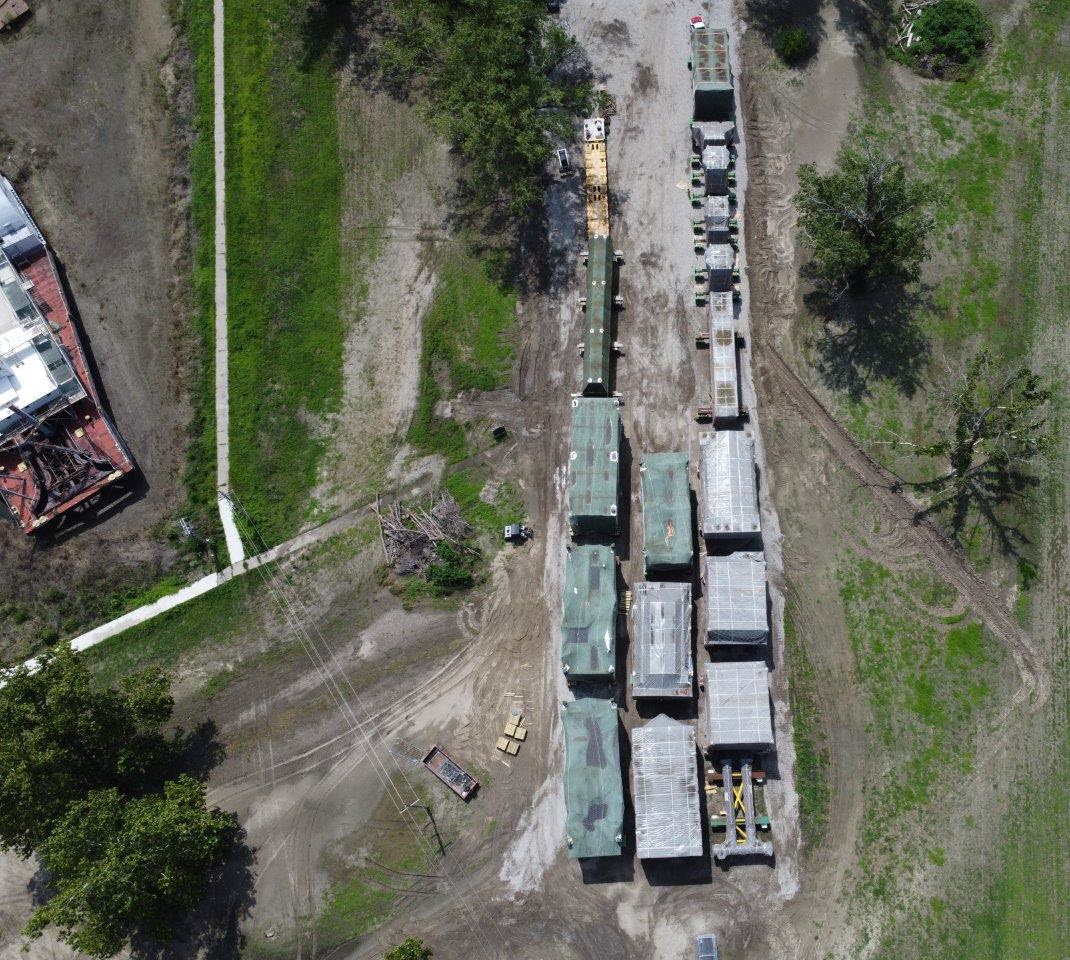
Utility Companies Play a Key Role in Safe Transport
Staging the cargo was done at the roll-off locations in Brownville because it could not move to the job site until utility companies lifted wires along the route. There were 113 power and cable lines crossing the roads – a combination of residential and agricultural lines. Coordination had to be done with 13 different utility companies to clear the way for safe transport. Some components were 21 feet in height and could not clear the lines even when lifted using bucket trucks.
With the help of the project owners, the entire team had to negotiate with local utility companies from the end of 2023 until the end of 2024 to raise or exchange utility poles so the module heights could clear the lines safely. The majority of the power poles could only be raised/exchanged in the early fall to avoid interrupting agricultural harvests. This meant that the modules had to be staged for a few months before the move to the final leg to the jobsite could take place.
Averting Customs and Duty Concerns
Another significant challenge was the customs clearance process. There were concerns that anti-dumping and countervailing duties might apply to the equipment imported from China. To address this, UTC’s Alison Peters, Senior VP of Import Compliance, communicated early on with the client to ensure the proper codes were applied.
Alison and her team worked closely with customs brokers and legal experts to classify all components correctly, minimizing duties.
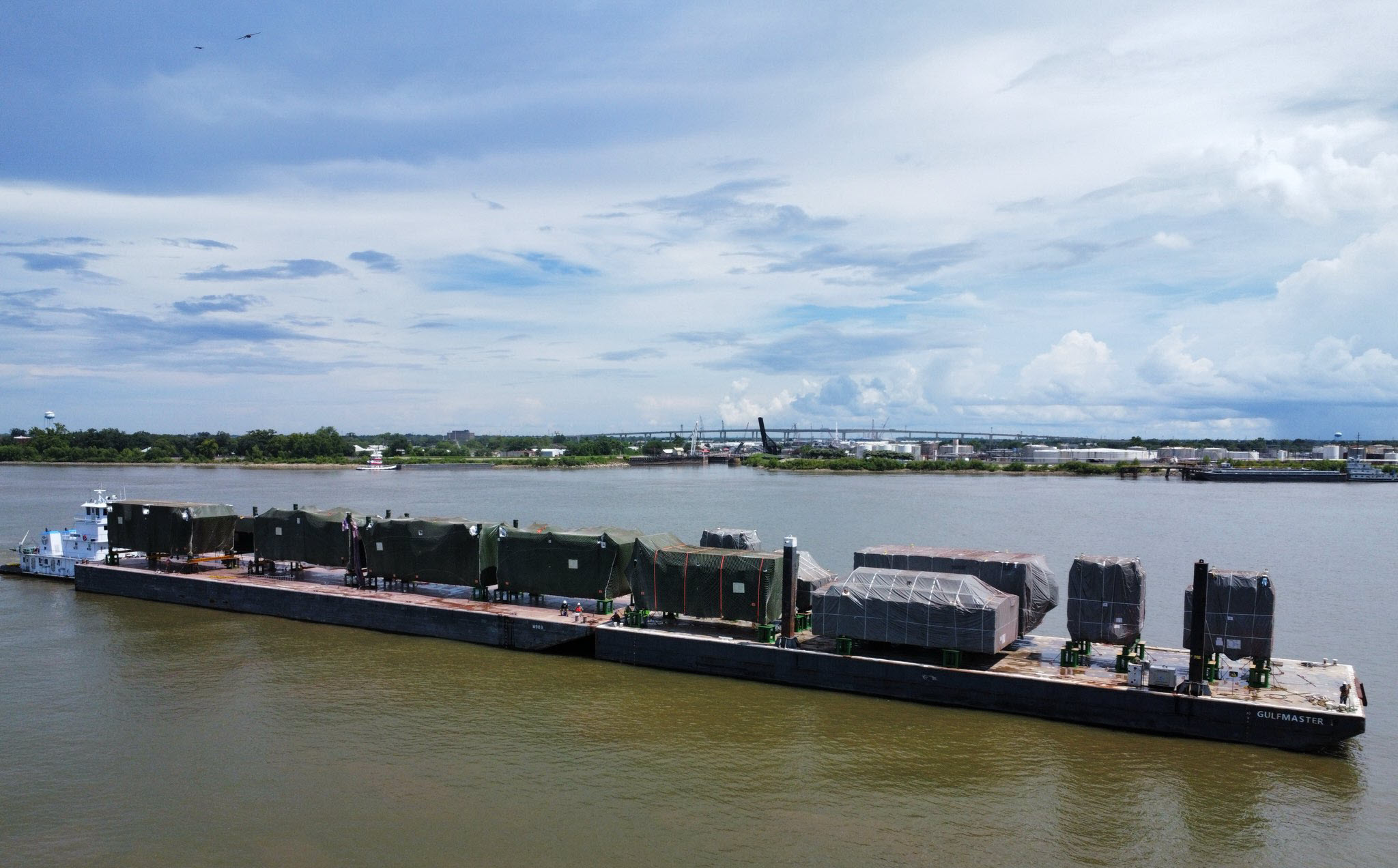
Heavy Haul Move to Final Job Site
“In the fall of 2024, the convoy of machinery began moving from the temporary storage area to the job site. The moves were done two modules at a time with police escorts. In addition, a collaboration of utility companies joined the convoy, each covering their section of the route and adjusting lines. With pole replacements now complete, the larger pieces could clear the lines. A total of 17 modules were transported in eight-night moves,” states Michael Kaemerow, Project Director.
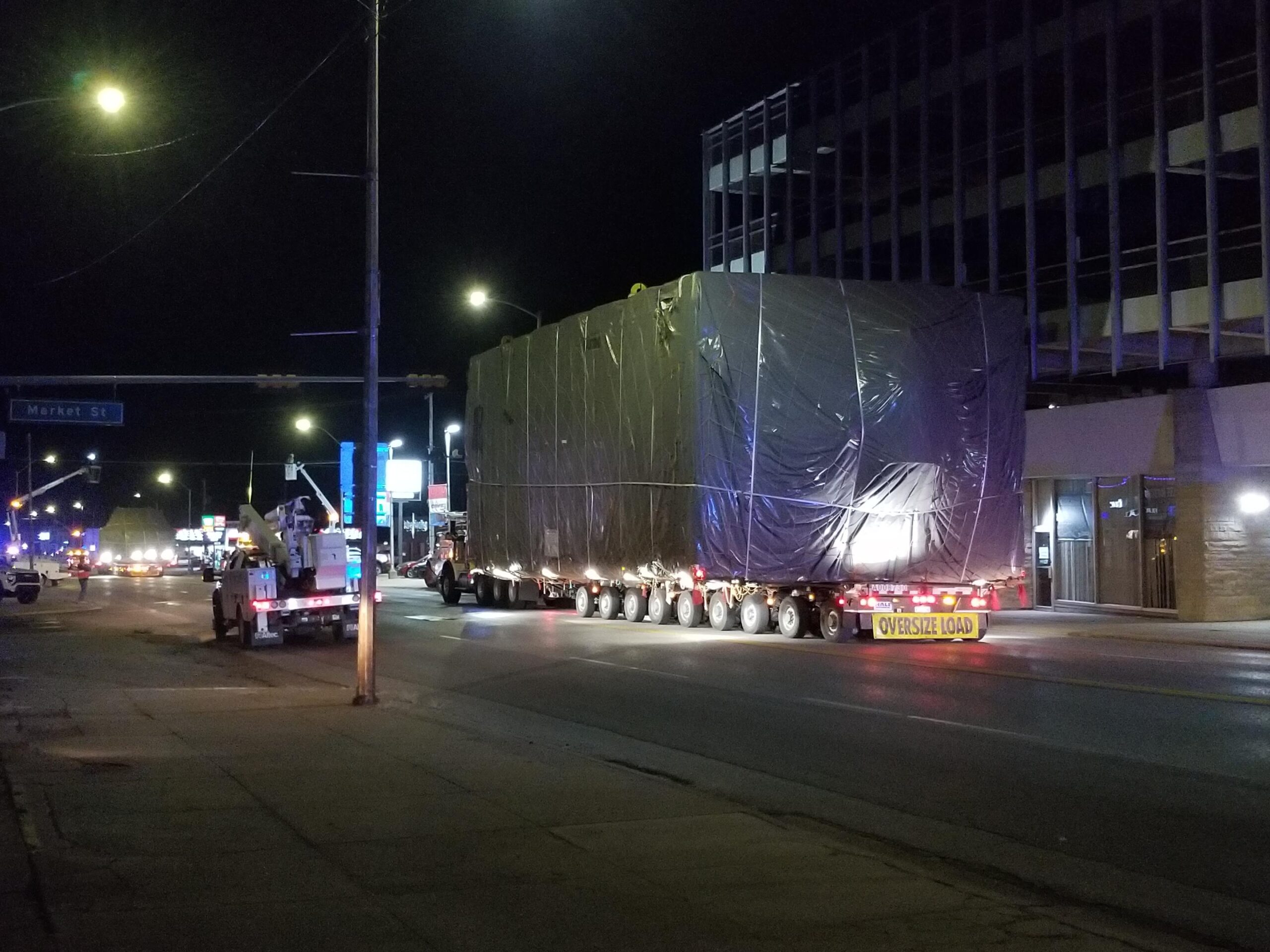
UTC Professionals Overcome Logistics Challenges
The entire process included over 2 years of surveys, planning, and execution, and involved coordination with various local and national agencies, including the Nebraska Department of Transportation (DOT), barge operators, utility companies, our heavy haul partners, and local governments.
UTC’s team of professionals overcame several challenges:
- Two major floods and extreme wind conditions
- Difficult terrain
- Components close to 21 feet in height
- Complex utility planning
- Anti-dumping and countervailing duty concerns
- Excavating barge landing areas and building a bypass bridge
Despite numerous diversions, the team successfully managed this large-scale transport and logistics operation, keeping the project on track and delivering the equipment to Hastings by the end of October 2024. The strength of UTC’s experienced and knowledgeable team and their ability to adapt to constantly changing conditions were on full display as they worked through numerous challenges to complete this job and meet the client’s timeline.

